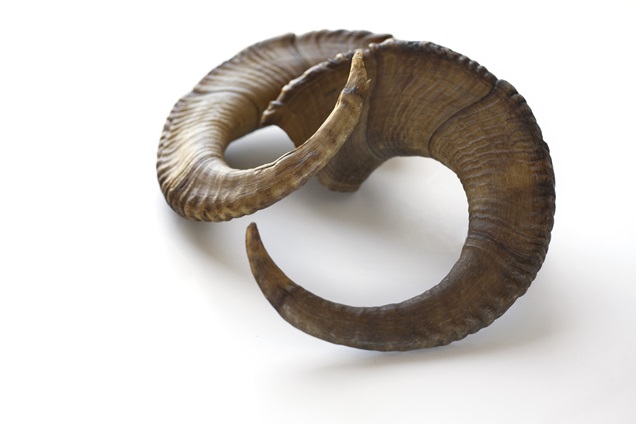Mammalogy

The mammalogy collection consists of about 22,600 catalogued specimens (approximately 21,500 skeletal specimens, 13,500 associated skins, and 1700 wet-preserved specimens). Among these are 180 holotypes. According to a survey published in 1987 by the American Society of Mammalogists the collection ranks 23rd in number of specimens and 6th in number of holotypes among mammal collections in North America.
The taxonomic and geographic scope of the collection is exceptional, especially considering its relatively small size. Taxonomic strengths include carnivores, bovids, and primates. The geographic distribution of specimen localities generally reflect the major collecting expeditions. The collections from Tibet, Central America and Indonesia are particularly unique and scientifically valuable. Specimens from across the U.S. are well represented, particularly the New Jersey / Pennsylvania / Delaware area. Many North American taxa, especially large carnivores, are from localities where those animals no longer occur.
Staff Contact

Ned Gilmore started working for the Academy in 1991. He has worked on collection databaseing, curation and Type studies of several of the collections at the Academy. His interests are in the Late Cretaceous and Early Tertiary fossils of the eastern coastal plain of North America. Ned also participates in many outreach programs for Academy members and the local community.
History

The Academy's mammalogy collection is one of the oldest collections in the New World. During the 19th Century the collection grew with donations and purchases from a network of prominent natural historians. Charles Lucien Bonaparte, Samuel George Morton, A.L. Heerman, Wm. McClure, T.B. Wilson, Joseph Leidy, E.D. Cope, Admiral R.E. Peary, George Harrison, Samuel N. Rhoads, and John K. Townsend were among the early collectors and patrons of the collection. The Harrison, Hiller and Furness expeditions to Borneo and Sumatra in 1896-1901 collected a large number of rare specimens now housed at the Academy.
In the first half of the 20th Century, mammalogy at the Academy reached worldwide with collecting expeditions. Among the major expeditions were Brooke Dolan's to Tibet and Western China in 1931-32 and 1933-34, George Vanderbilt's expeditions to Africa in 1934 and Sumatra in 1939, M.A. Carriker Jr.'s expeditions to Peru and Bolivia in 1929-30, 1935 and 1938, Robert K. Enders' to Panama in 1935, 1937 and 1941, Wharton Huber's to the southwest U.S. and Mexico in 1927, 1929, 1931, 1932, 1933, Nicaragua in 1922, and Louisiana in 1934, and O.P. Pearson's to Panama in 1938.
Since 1943, in-house mammal research has been virtually absent from the Academy. Occasional curatorial work and research by Karl Koopman, Richard Estes, Charles Smart, and Frederick A. Ulmer, Jr. are the exceptions. During this time outside, however, researchers have continued to use the collection. Current work is aimed at keeping the collection accessible for research and improving curation and storage conditions so that data is updated, clarified and preserved, and so that the specimens do not degrade in quality.
Loan Policy & Agreement

Loan Policy
Loans of specimens are made at the discretion of the curator-in-charge to institutions under the name of a permanent staff member of the institution. Specimens must not be moved to another address without written permission from Academy of Natural Sciences. A loan request from a student must be countersigned by their major professor who will assume responsibility for the specimens.
No more than one-half of the total specimens of a species will ordinarily be lent at a time. The remainder may be requested after return of the first loan. Series of specimens from single localities may be borrowed as units so long as they do not exceed one-half of the total. Fragile specimens (e.g., certain skeletal and larval materials) will ordinarily not be lent. Non-type specimens are loaned for a period of one year. Holotypes and paratypes are loaned separately from other specimens. Type material is loaned for a period up to 6 months.
The recipients of loans must agree to the conditions for handling and use of the specimens stated in the Loan Agreement below.
Loan Agreement
Recent research on conservation problems in our collections has shown that many specimens are more delicate than we had previously assumed. Therefore, we have instated the conditions below for handling and use that must be agreed upon in order to receive material on loan from the Vertebrate Zoology Department of the ANSP.
- Gentle compressed air may be used to clean a specimen. No other cleaning may be attempted without written permission.
- No repairs may be made to specimen(s) unless written permission is obtained. Please do not use any kind or glue or other adhesives.
- No coatings (including sublimated ammonium chloride or magnesium oxide, or SEM coatings), stains, consolidants, molding media, separators, etc., may be applied without written permission.
- No sampling or destructive analyses of any kind are to be performed on specimens without written permission.
- Competent specimens may be measured and photographed. Please minimize exposure of specimens to hot photofloods.
- All efforts must be made to store specimens under stable conditions that would minimize exposure to dust, and fluctuations in temperature and relative humidity.
- All contents of each specimen should be returned, including all labels, contained sediments, etc. Original data labels many not be written on under any circumstances. Any systematic change contemplated, especially type designations, or comments regarding a particular specimen, should be annotated with the specimen upon its return, on a separate slip of paper. Please include the ANSP catalogue number, the name of the person annotating the specimen(s), and the date the annotation was written.
- It would be greatly appreciated that relevant reprints regarding any of the loan specimens be sent to the Vertebrate Zoology Department when they become available.
- Specimens must be unpacked and repacked with care, preferably using the same material(s) with which they were received. Please be aware that specimens are easily broken by over packing and by insufficient cushioning.
- The loan must be returned by the time stipulated, unless a loan extension has been granted.